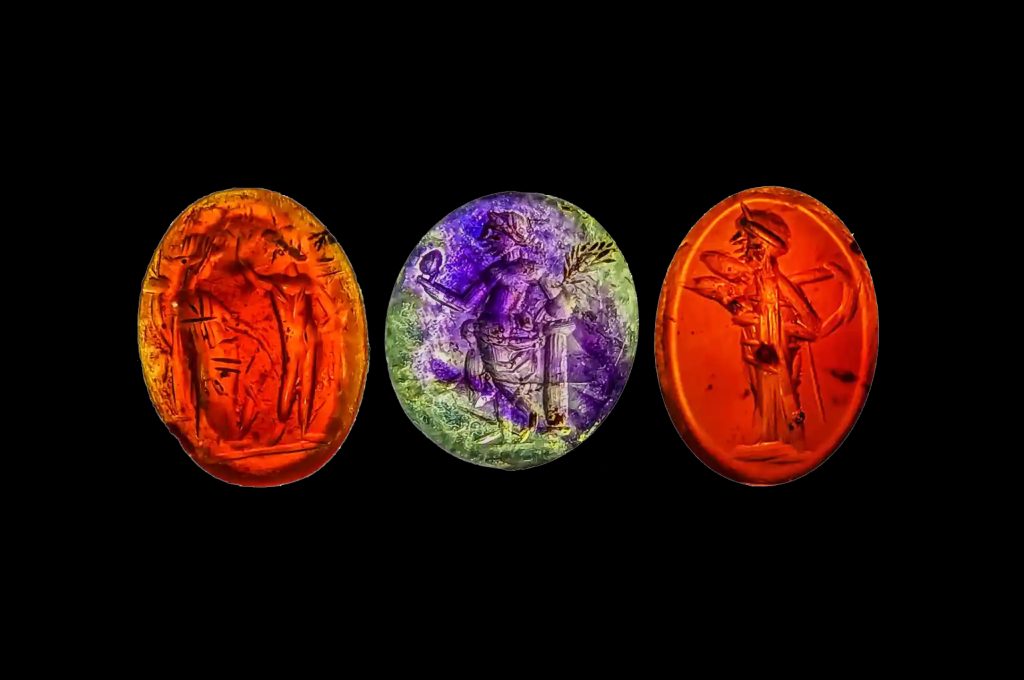
30 semi-precious engraved stones, known as intaglios, have been retrieved from the drains of an ancient Roman bath house near Hadrian’s Wall in the UK. With the stones appearing to have dropped out of their ring settings, it would have been a devastating loss for the owners as the beautifully crafted engravings suggest they would’ve been of monetary value in their day.
Archaeologist and Roman Britain expert, Frank Giecco explains how the gems were set with a vegetable glue and suggests that the heat from the baths and saunas would cause the glue to evaporate, leaving the stones to be sucked down the drain. “Some of the intaglios are minuscule, around 5mm; 16mm is the largest intaglio. The craftsmanship to engrave such tiny things is incredible… you don’t find such gems on low-status Roman sites. So they’re not something that would have been worn by the poor” Giecco says.
This now excavated bath house was adjacent to an important Roman fort along the Hadrian Wall that held an elite cavalry unit, which explains the quality and quantity of the gemstones that were found. Similar style intaglios have also been discovered in old bath houses in other regions of the UK.
Further reading: